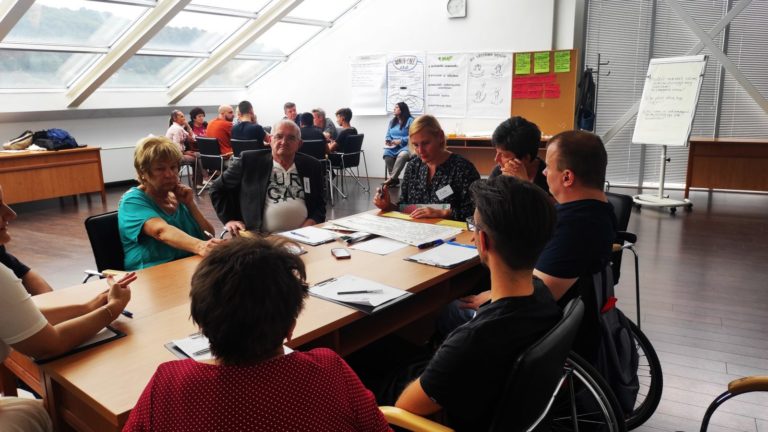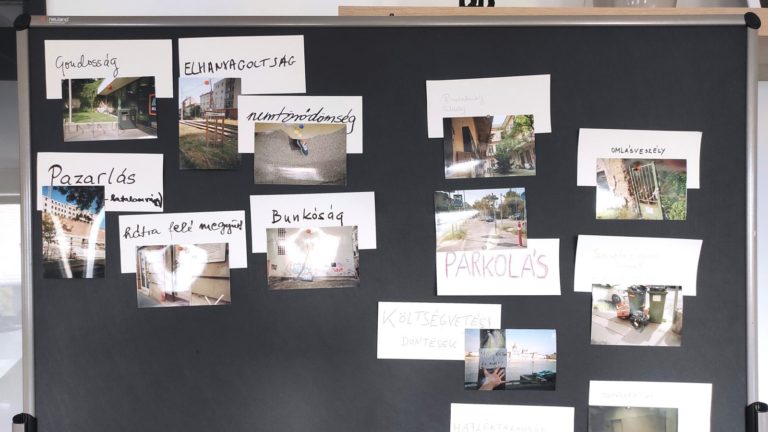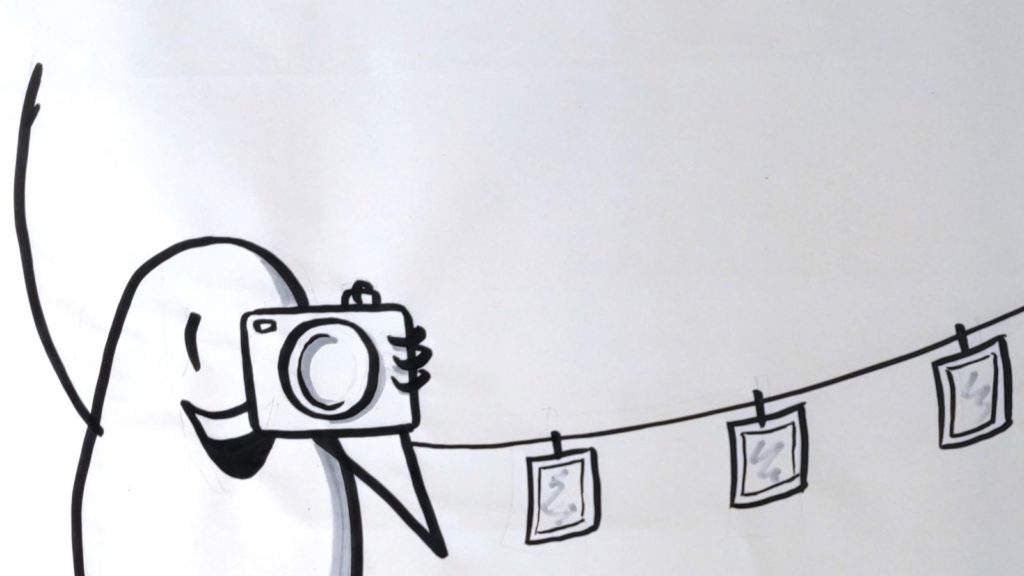What do we consider to be public affairs and what factors prevent us from shaping them? – these are the questions that DemNet is exploring in its latest research. The topic is not only exciting but also deeply connected to understanding how Hungarian society works. To find answers we are using for (as far as we know) the first time in Hungary the participatory research tool called photovoice.
Magnification: snapshots of issues, solutions, possibilities and barriers affecting everyone – this is the title of the research in which three groups of 20 people are currently taking part in three different locations in Hungary (Miskolc, Budapest, Örkény). One of the groups is completely mixed, one is made up of specifically women while one contains solely members of the Roma community. The recruitment for the research was carried out by the Medián polling company. Participants were selected randomly but in a way that ensured that they would come from a large range of different backgrounds.

For the research we are using the photovoice, the innovative technique, invented by Caroline C. Wang, a professore of Michigan University in 1992. The method derives its name from the fact that it uses a combination of photography and focus group discussions to gain rich, multi-dimensional understandings of particular phenomena. “Its purposes are to create a visual representation of participants’ experiences, feelings and perceptions, critically explore the meanings (overt and hidden) within the photographs through focus group discussions and communicate the findings to others, including policymakers.”(Fitzgibbon & Healy, 2017).
The process
Two full day sessions are organized for each group locally. During the first occasion the participants, with the help of facilitators, begin to discuss what they view as public affairs, whether they take part, or try to take part in forming these, when they do, what the obstacles they encounter or the tools that they find useful are and what eventually prevents the community from taking collective steps to change the given situation.
On the same day members of the group take part in a crash course in photography. A professional photographer teaches them how to use an analogue camera. Beside the technical aspects the photographer also tells them about the legal constraints and ethical standards of taking pictures.
Following the course each participant receives a disposable camera with which they can take 26 photos. Their task is to go home and in the days following the workshop take snaps of things in their environment (locations, people, situations…etc.) that reflect their relationship to public affairs.

The disposable cameras are then collected, the photos are developed and handed back to the participants in an envelope. It is important to point out that we do not ask the participants to write their names on the cameras in stead they are requested to mark them with an identifier of their choosing. This ensures their anonymity during the process.
The next phase is the second group discussion. For this occasion participants are requested to bring with them two-three of the photos that they are the most pleased with and would be the most willing to talk about. During the session members of the group, once again with the help of facilitators, jointly discuss what and why they decided to capture on camera and also reflect on each other’s pictures.
A picture can be worth a thousand words
You might be wondering: Why isn’t it enough for participants to simply share their experience, thoughts and feelings verbally with researchers? The answer to this is that the photovoice technique offers a much richer opportunity for understanding other people’s experience. It allows participants to identify and reflect on the issues as well as the weaknesses and strengths of their community while the images can serve as a starting point to far reaching dialogues about these issues. It is also worth mentioning that contrary to most, more traditional research techniques, photovoice creates an atmosphere which lacks the usual hierarchical structure between researcher and participant. You could even say that everyone is a researcher since it is the participants who are creating the photos and they are also the ones interpreting the images for the official researchers.
Nowadays almost everybody carries a smartphone and it would be hard to argue that most of the devices on the market are perfect for taking high quality images. Why do participants then have to fiddle about with disposable cameras? Well, the truth is, there are quite a few reasons for that. The first one is that the restricted number of pictures one can take encourages participants to give careful consideration to what they photograph, therefore prioritizing quality over quantity. The disposable cameras also ensure that no participant has a technical advantage over others when it comes to taking the pictures. Finally, through the research process participants learn a new skill. Perhaps they will not not become photographers but they all learn the basics of how to use an analogue camera.

The purpose of the research is not for participants to take artistically valuable, flawless pictures! Through photovoice we can collect the images and narratives of participants in order to transform their experience into practical, everyday knowledge.
What is happening now and what’s next?
The workshops began in September and according to plans they will have ended by the middle of October. When the research is concluded we plan to organize a photo exhibit from a part of the pictures taken by participants. Hopefully we will be able to share further details regarding when and where in the near future.
In this project DemNet is working together with the Hungarian Association of Facilitators and ELTE researchers. The photography trainings are conducted by Balázs Turay and Barbara Zerinváry.

